|

Sam Benzacar of Anatech Electronics, an RF and microwave filter company, has published
his November 2021 newsletter that features his short op-ed entitled "C-band and
Altimeters: Bad Company? ," where he notes that even though FCC concluded that the
AVSI study "does not demonstrate that harmful interference would likely result under
reasonable scenarios," there is enough concern in the non-standardized radar altimeter
realm to raise a red flag. As Sam points out, there is a full 500 MHz separation
between the C-band wireless band and radar altimeters. Sam also presents some relevant
industry news items as well, including Amazon planning to launch Kuiper satellite
prototypes, and the DoD funding research that combines 5G and optical sensors.
A Word from Sam Benzacar
C-band and Altimeters: Bad Company?
 By Sam Benzacar By Sam Benzacar
As 5G networks add to their mid-band spectrum portfolio, it was only a matter
of time before interference issues would arise, and one of the latest is interference
to the radio altimeters used during landing in all types of aircraft. In both the
U.S. and Canada, objections have been raised by airlines and their respective governments
about operation at C-band frequencies between 3.7 and 3.7 GHz, which is close to
the 4.2 to 4.4-GHz at which altimeters operate in the US.
On the face of it, the 500-MHz separation between these bands should pose no
interference potential as bandpass filters with high levels of rejection could eliminate
any spurious emissions. However, airlines, aircraft manufacturers, the FAA, and
Canada's Department of Innovation, Science, and Economic Development (ISED) aren't
so sure.
What's remarkable is that while the wireless industry has extraordinarily comprehensive
specifications regarding system performance for 5G, the same can't be said for radio
altimeters for which there is no internationally recognized standard. As a result,
a study conducted by the Aerospace Vehicle Systems Institute (AVSI) showed that
there could be a wide variation in radio altimeter performance amount various manufacturers.
What this conclusion is referring to is that some altimeters may not have adequate
receiver filtering.
However, the FCC concluded that the AVSI study "does not demonstrate that harmful
interference would likely result under reasonable scenarios" or even "reasonably
foreseeable scenarios." To support this conclusion, T-Mobile cited a study conducted
by the engineering firm Alion that concluded that the assumptions in the AVSI study
were extreme, and thus resulted in extreme conclusions. With tens of thousands of
commercial and general aviation aircraft in service throughout the world, the ramifications
of this situation cannot be overstated. And while it's true that wireless broadband
networks have been operating at 3.7 to 4.2 GHz in the US and other countries for
years, there have been no reports of problems.
But the use of C-band frequencies will dramatically increase activity, so it's
too soon to assume they won't cause interference. That solution, as proposed by
the FCC in a Special Airworthiness Information Bulletin issued on November 2, is
for radio altimeter manufacturers, aircraft manufacturers, and operators to voluntarily
provide information to federal authorities related to altimeter design and functionality
and that they test and assess their equipment. Unfortunately, the C-band allocations
in the US are set to take effect on December 5, which leaves virtually no time to
come up with a solution. That solution would arguably take an extremely long time,
as ideally, altimeters in every aircraft should be tested. In the meantime, the
flying community will be test bed.
Anatech Electronics has been providing standard and custom RF and microwave filters
and other filter-based components to solve interference problems for utilities,
oil and gas companies, and organization with similar requirements for more than
30 years, and we can solve yours as well. So, reach out to us with your most challenging
problems at (973) 442-7272 or visit our website at
anatechelectronics.com.
 WeLink Rolls out 60-GHz Gigabit Fixed Wireless WeLink Rolls out 60-GHz Gigabit Fixed Wireless
WeLink, a service provider founded in 2018, has rolled out fixed wireless service
offering symmetrical speeds up to a gigabit per second in metro Las Vegas and Phoenix.
The company will use 60-GHz wireless technology that it developed, which will be
used for both fronthaul and backhaul. The access equipment uses a mesh approach
in which one customer's equipment can act as a repeater for another customer to
extend range. The company plans to charge $70 a month for gigabit service for 24
months or $80 a month without a time commitment.
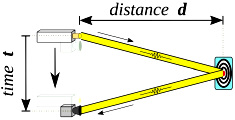 DoD Funds Research That Combines 5G and Optical
Sensors DoD Funds Research That Combines 5G and Optical
Sensors
The Air Force and the Department of Defense are exploring the use of 5G as a
surveillance imaging sensor through a $297,000 grant from the Air Force and $295,000
from DoD to associate professors Yu Chen and Xiaohua Li at Binghamton University's
Thomas J. Watson College of Engineering and Applied Science. A 5G network would
form a millimeter-wave camera similar to an infrared time-of-flight camera. Network
security would be maintained what the researchers call Environmental Fingerprint-based
Consensus Blockchain (ENFChain) to authenticate data sources, bookmark data transactions,
and encrypt the data. The goal is to achieve full-spectrum surveillance that works
in all weather conditions. This would make it possible to let troops in urban areas
see enemy combatants around corners or in dark spaces that would otherwise be obscured.
 Verus Research Gets DARPA High-Power Microwave
Pact Verus Research Gets DARPA High-Power Microwave
Pact
New Mexico-based Verus Research has been awarded a 48-month $5 million contract
in DARPA's Waveform Agile RF Directed Energy (WARDEN) program to develop hardware,
theory, and computational models to extend the range and effectiveness of high-power
microwave (HPM) systems. The effort focuses on electromagnetic interactions with
electronics contained within enclosures and the effects on system operation. The
effort will help guide the development of new HPM systems, extending their range
and effectiveness, and providing new HPM employment approaches for DoD.
 Amazon to Launch Kuiper Satellite Prototypes Amazon to Launch Kuiper Satellite Prototypes
Amazon plans to launch its first two prototype satellites for the Project Kuiper
constellation in the fourth quarter of 2022 after signing a multi-launch agreement
with ABL Space Systems that is developing the launch vehicle. Amazon's KuiperSat-1
and KuiperSat-2 will demonstrate the technology the company plans to deploy in a
complete constellation. It includes phased-array and parabolic antennas, power and
propulsion systems, and custom modems. The prototype Ka-band satellites will be
deployed at 590 km from Earth and will be launched consecutively on two launch vehicles.
The satellites will be equipped with sunshades to avoid conflicting with radio telescopes,
an approach also used by SpaceX.
Getting Ready for 5G:
Anatech Electronics introduce New Ka band 30.5 GHz Waveguide Band Pass Filter.
Featuring a center frequency of 30.5 GHz, a bandwidth of 1000 MHz, an Insertion
Loss 1 dB Max, and a Power Handling is 20 watts.
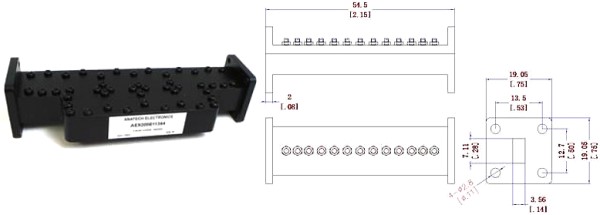
Anatech Electronics Introduces a New Line of Suspended Stripline and
Waveguide Type RF Filters
Check out Our Filter Products
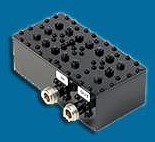
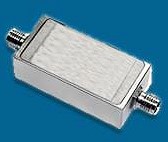
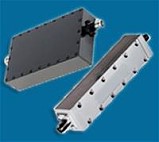
Cavity Band Pass Filters
LC Band Pass Filters Cavity Bandstop/Notch Filter
About Anatech Electronics
Anatech Electronics, Inc. (AEI) specializes in the design and manufacture of
standard and custom RF and microwave filters and other passive components and subsystems
employed in commercial, industrial, and aerospace and applications. Products are
available from an operating frequency range of 10 kHz to 30 GHz and include cavity,
ceramic, crystal, LC, and surface acoustic wave (SAW), as well as power combiners/dividers,
duplexers and diplexers, directional couplers, terminations, attenuators, circulators,
EMI filters, and lightning arrestors. The company's custom products and capabilities
are available at www.anatechelectronics.com.
Contact:
Anatech Electronics, Inc.
70 Outwater Lane
Garfield, NJ 07026
(973) 772-4242
sales@anatechelectronics.com
Posted September 29, 2021
|





























 By Sam Benzacar
By Sam Benzacar WeLink Rolls out 60-GHz Gigabit Fixed Wireless
WeLink Rolls out 60-GHz Gigabit Fixed Wireless
 DoD Funds Research That Combines 5G and Optical
Sensors
DoD Funds Research That Combines 5G and Optical
Sensors  Verus Research Gets DARPA High-Power Microwave
Pact
Verus Research Gets DARPA High-Power Microwave
Pact  Amazon to Launch Kuiper Satellite Prototypes
Amazon to Launch Kuiper Satellite Prototypes






